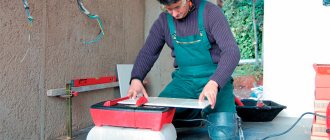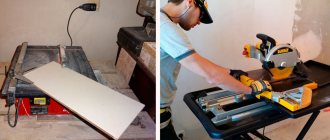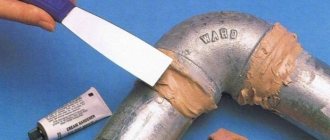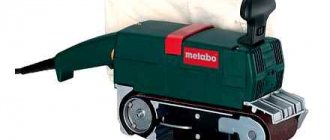Basic design and technological capabilities
Tile cutter is a generalized name for construction tools for straight, curved or even shaped cutting of tiles. The classification of the variety of these tools is based on the type of drive movement. So, tile cutters can be:
- Manual;
- Mechanized or electric.
A manual tile cutter consists of a base - a frame, a carriage with a roller and a handle. Its operating principle is similar to that of a regular glass cutter: a cutting roller is used to cut the glaze of the tile. At this moment it is clamped in the body like pliers. After obtaining a cut of the glaze, the tiles are broken off along it. To obtain a more even and accurate cut, guides are used that are adjusted to the tile clamping field. Sometimes tabletop manual tile cutter
An electric tile cutter is a device equipped with an electric drive that rotates a diamond cutting disc. The principle of operation of this version of the tile cutter is similar to a circular saw - the ceramic tiles move along the guide to obtain an even and neat cut. One of the varieties of mechanized tile cutter is a belt cutter, equipped with a diamond belt. To cool the tiles, water is supplied to the cutting area, which also washes away the cutting products.
In order to cut ceramic tiles correctly, you need to know how to use a tile cutter correctly .
How to cut tiles with a tile cutter?
Have you bought a tile cutter, read the instructions, installed it on a suitable surface and are afraid to start working? Read our plan for mastering the tool and go ahead! Procedure:
- place a film under the device and around it, since you do not know what volume of water in the pan is optimal and whether the device splashes water when supplied directly;
- put on safety glasses;
- stock up on previously damaged material and start training on it;
- make markings (straight cut, diagonal);
- firmly fix the tile on the work table along the guide to avoid vibration;
- When the disk enters and exits the tile, do not press it, otherwise chips and cracks will appear.
The easiest and most understandable way to master a tile cutter is to learn from a master. Watch the video, it shows the work process in detail.
Features of modern tile cutters
So, a tile cutter is a specialized tool designed for cutting finishing tiles made from various materials (ceramics, stone, porcelain stoneware, etc.) to form a high-quality cut.
The main structural components are:
- A cutting element, or roller, made of carbide steel.
- A goniometer, or protractor, in combination with a rotating ruler, provides the ability to cut tiles at an angle. Models of a high professional level can be equipped with a special device that allows you to cut round holes - a “ballerina”.
- Guides rigidly fixed in supports
- A foot whose functional purpose is to break tiles.
- A base or platform that provides a stable position for the tool.
- Handle.
However, knowledge of the design features of the tool does not guarantee a high-quality result.
The process of using a tile cutter as a cutting tool is characterized by several distinctive features:
- Possibility of making cuts at angles of 45 and 90 degrees.
- Providing high-quality and fast cutting.
- Ability to cut tiles for various functional purposes (cladding, flooring).
What are the advantages of using electric tile cutters?
You should purchase a machine for cutting tiles with water if you are processing durable materials at a professional level. The following advantages will help you make a positive decision about purchasing or renting a machine:
- Efficient cutting of materials of different thicknesses. Depending on the model of tile cutters, they allow you to cut parts of different thicknesses, which is very convenient, for example, when you need to get the appropriate size of a product. On machines, depending on the model, the maximum permissible thickness of materials that can be cut with a tile cutter is indicated.
- Lack of dust formation is one of the significant advantages, which is achieved due to the presence of a water cooling system
- High productivity - water during the cutting process lowers the temperature of the disk, eliminating its overheating. The diamond-coated wheel does not heat up and does not melt, so it lasts long enough and efficiently, eliminating engine overload
- You can cut any types of materials from tiles to glass
- Long service life not only of the machine, but also of the cutting disc. You can work on one disk for at least 2-3 years with daily appropriate manipulations
- The ability to obtain not only a straight cut at an angle of 90 degrees to the main surface of the material, but also at different angles, pre-setting the position of the disk
The ability to cut materials of different sizes depends on the dimensions of the table. That is why, before buying a machine, it is necessary to consider what materials you plan to cut - their thickness and dimensions. Electric tile cutters with a water cooling option have a number of disadvantages. These disadvantages must be taken into account immediately before purchasing machines.
Types of water cooling on tile cutters
Water is supplied to tile cutters through an auxiliary system consisting of a supply hose, which is connected to a container or reservoir containing water. The design also uses a pump responsible for pumping water from the reservoir to the work area.
The water supplied to the cutting area flows into another tank, which is located at the bottom of the table (under the tabletop). This reservoir fills up during operation, so it must be cleaned. Electric tile cutters use two types of water cooling systems:
- Conventional - when clean water from one reservoir is supplied to the working part, and then accumulates in another container. After filling the container, this water must be disposed of. The disadvantage of the system is that it is necessary to constantly add water to the first container
- Circulating in a circle - this option is more advanced, but has its drawbacks. Water from one container is supplied to the working part, and then enters another container, from where it is pumped back to the first. The disadvantage of the system is that water is re-supplied with dust and small particles, which negatively affect the pumping equipment
If the tile cutter does not have a water cooling function, then you can implement it yourself by using a bottle with a hole in the cork. During the cutting process, one person controls the cutting disc, and the second applies water to the working surface of the tool
Water-cooled electric tile cutter: advantages and disadvantages
The advantages of any thing can only be assessed by comparing its capabilities with a similar product, and an electric tile cutter is no exception. Let's start in order. A clean, smooth, and most importantly high-precision cut without chipping the edges of the tiles - only this tool can combine all these three advantages. For example, its manual counterpart also cuts tiles evenly - the accuracy and cleanliness of the cut is questionable. In fact, a manual tile cutter does not cut, but breaks the tile smoothly - the end of the tile is by no means smooth, as the diamond blade of an electric tile cutter makes it. You ask, what about the Bulgarian? It chips the edges of the tiles - unfortunately, without water cooling of the disc it will not be possible to make a smooth, high-quality cut. No dust. In principle, a manual tile cutter is also dust-free, but, unlike an electric one, it does not have the above advantages. Possibility to make cuts at an angle. No other tile cutting tool can cope with this task. Why are such cuts needed? Have you ever seen wall corners laid at 45˚? Believe me, they look much more attractive than corners lined with special corners. Trimming speed. This advantage of this tool will show itself well when laying tiles in large volumes - believe me, an electric tile cutter will give odds to its manual counterpart and even an angle grinder.
Don't miss: What are furniture fittings? Main varieties
How to use a tile cutter
In addition, one cannot discount the nuance that, unlike a manual tile cutter, an electric one can be used to cut segments of any shape in tiles. If you really want to, you can even cut rectangular holes in the tiles. There is also a limited ability to make curved cuts of high purity - this, however, requires practice and dexterity. And in general, with the help of an electric tile cutter you can cut even the most durable tiles. For example, some types of porcelain stoneware designed for floor use cannot be cut with any other tool.
Stationary electric tile cutter photo
What is a tile cutter (electric)
Before figuring out how to cut ceramic tiles with an electric tile cutter , it would be nice to find out what this tool is. A modern electric tile cutter cuts the tiles with a diamond blade while cooling the surface with water. Based on the principle of operation, this tool can resemble a circular saw or a miter saw. They have the same arrangement of the motor, cutting wheel, support platform and frame with a rotating head. The special feature of the tile cutter is the diamond coating on the disc used and the ability to supply water to the work area. The system for gripping and positioning workpieces is also somewhat complex.
, the electric tile cutter successfully copes with cutting not only tiles, but also stone (natural and artificial), brick, concrete, ceramics, porcelain, glass and many other building materials. For this, a properly selected disk and feed speed are enough.
The supply of water helps to cool the surfaces of the part and the tool itself, as well as some “knitting” of dust so that it is practically absent during operation. The supplied water ensures fast and clean cutting, smooth tile edges, and no chipping or serious damage to the glaze.
To achieve cutting accuracy in an electric tile cutter, there is a cantilever immersion mechanism, stop systems (parallel and angular), line indicators and much more.
A modern electric tile cutter has a number of advantages:
- straight cut lines on the tiles,
- the ability to minimize the number and size of chips,
- possibility of cutting parts at an angle,
- minimum dust during operation,
- high security and good performance,
- the ability to make grooves in the tiles, cut them diagonally and from the middle,
- the ability to cut off even a few millimeters from the edge.
However, like any other tool, an electric tile cutter is not without some disadvantages:
- inability to make cuts along a curved line,
- quite high cost, which is justified by quality and functionality.
Basic criteria for choosing a tool
The quality of the work performed largely depends on the quality of the tool used in the work process. The correct choice of a tool, regardless of its design and basic operational characteristics, is ensured by the tile cutter meeting the following criteria:
- No external damage or defects. Controlled by performing a thorough external inspection of the product, test running it and checking adjustments.
- Geometric dimensions of the platform, length of the handle, rigidity of the base.
- Smooth running of moving elements.
- Possibility of cutting at an angle. In addition, you should pay attention to the ease and speed of setting the cutting angle, as well as the accuracy of the final result.
- The quality and material of the cutting disc.
- Includes spare parts and accessories included with the tool.
How to choose a manual tile cutter
You already know how to cut with a manual tile cutter. Now pay attention to the tips that will help you choose a reliable tool:
If you want the tool to last for a long time, choose a manual tile cutter with a frame made of durable material. Otherwise, the tile cutter will not withstand even a small amount of work or will break completely upon first use; When buying a manual tile cutter, consider its length: a tool that is too short will only be suitable for small-sized tiles.
And if you try to cut large tiles with it, you will most likely ruin both the material and the tool; In order for the cut to be neat and even, the tile cutter must work smoothly. To ensure smooth running, the design of the tool includes bearings that set the desired smooth running of the carriage. But if you still decide to buy a tile cutter without bearings, work with it very carefully or choose tools from well-known manufacturers: they ensure the smooth running of their tile cutters in other ways.
← Go back
Cosmetic repairs often involve the installation of ceramics.
It is used for cladding walls and floors in the bathroom, kitchen or restroom. When laying tiles, you need to use a special tool. This device is called a manual tile cutter - a simple and convenient device for processing ceramics.
To properly tile a surface, you need to know how to use a manual tile cutter. During work, there is always a need to cut ceramics into fragments of suitable size. This article will help you learn how to properly use a manual tile cutter.
Principle of operation
A manual (mechanical) tile cutter is the choice of those who rarely cut material. In this case, the work is performed in two stages. The tile is fixed on the work table and cut with a special roller, after which it is broken along the applied mark. It is important to lubricate the guide frame and wheel before cutting (it is enough to apply a few drops of oil to these elements). In addition, the wheel must be firmly fixed and not “move” from side to side, otherwise the cut being made will not be straight and even. It is also worth periodically checking whether the cutter is worn out and, if necessary, replacing it with a new one.
To make the cut itself, mark the tiles with a marker, secure the material on the machine using a bounding frame so that the wheel coincides with the drawn line. Next, you need to apply the mark once with sufficient pressure.
Please note: it is best to do just one pass - this will make the tiles crack easier. If you make several cuts in one place, the chips will be uneven.
After the slot has been made, the tile is pressed with the carriage foot at the base. After this, the handle is lightly struck with the palm of your hand. Here it is also important to apply enough, but not too much force.
The final step is usually to process the cut if it is uneven. To do this, use several types of sandpaper (for processing tiles of different hardness) or a grinding stone. It is worth noting that this operation is not necessary if the edge is subsequently covered with another tile.
An electric tile cutter is a technique that comes in handy if you have to work frequently. In this case, the cut is performed in one pass with a water-cooled saw blade. This cutting method is the most effective for thick (up to 40 mm) workpieces.
Important! An electric tile cutter is not designed to cut tiles coated with carbide chips, as this will destroy the tooling. This type of material is cut by mechanical devices.
The principle of working with an electric tile cutter is as follows. Markings are placed on the tile and secured to the equipment work table using a clamping bar, or a straight or angular stop is used, which fixes the workpiece in the required position and at the same time serves as a guide. Next, the saw blade is started. When it reaches maximum speed, either the tile is moved under the disk with a certain force, or the saw head itself is guided along the tile by a special handle.
Water cooling of the contact point between the disk and the material is necessary to avoid overheating. The liquid washes away a large amount of abrasive dust and small fragments. Therefore, it must be changed frequently so that the saw equipment does not wear out quickly.
Types of water-cooled tile cutters
Today there are a huge variety of models of these devices. They are produced by different brands and differ from each other not only in appearance, but also in technical characteristics.
All electronic tile cutters are usually divided into two main types:
- manual;
- professional.
Manual. Such tools have a simple and convenient design. They can operate both from the electrical network and from a rechargeable battery (AB). According to the principle of operation, they resemble angle grinders, with the only difference being that they use tiles as products for processing.
A manual electric tile cutter consists of a handle, a support element called a soleplate, and a fluid reservoir. As well as elements that allow you to adjust the position of the functional part. It is advisable to operate such a device only in a horizontal plane. This is due to the fact that, being in a vertical position, the product does not prevent the formation of dust. For more complex work, there are manual professional tile cutters.
A household electric tile cutter is not intended for cutting hard materials, such as porcelain tiles and granite; it can only work with tiles or glass.
Today on the construction market you can find larger models that run on battery power. The main advantage of such devices is autonomy. They are a kind of transitional link located between manual and professional instruments.
In turn, professional devices are classified according to characteristics such as the location of the motor. It can have two positions:
- above the working plane;
- below the working plane.
Devices with a motor at the bottom. The main characteristics of such models include high cutting quality, as well as good protection from dust during operation. The cutting element is represented by the same diamond-coated disk. The design feature of this device is the location of the functional part. The upper half of the cutting wheel is located above the working plane, and the lower half is placed in a reservoir of water.
This motor position allows the production of compact equipment that is versatile. Such devices are highly popular in the construction market precisely due to their small dimensions. When renovating an apartment, it is always difficult to find enough space for a large model.
A professional water-cooled tile cutter has sufficient power and performance, it is large in size and has a high price.
Bottom drive devices allow you to cut fairly large products from ceramics and other finishing materials. This is due to the fact that there are no limiting structural elements on the working surface.
On a note! Among the disadvantages of stationary models that have a motor at the bottom, it can be noted that during cutting you need to move the workpiece with your own hands. Therefore, it is advisable to have experience to work with such a tile cutter.
Models with motor on top. They are professional electric tile cutters. Devices of this type are quite large in size and have a complex design. To operate a water-cooled top-drive electric tile cutter, you must have sufficient experience.
All devices with a motor located at the top are divided into two types:
- console;
- pavements.
In the first case, the device is equipped with a console, which is secured using special locking elements. The working platform of such a device is characterized by mobility. Bridge electric tile cutters include a movable functional part that moves using special guide elements.
A more reliable and high-quality electric tile cutter with water cooling, the motor of which is located in the upper part of the tool.
How to use a manual tile cutter?
In order to get an even cut line without damaging the ceramic tiles, you should follow simple rules:
Tools for cutting tiles.
- Before starting work, carefully check the condition of all elements of the tile cutter: the diamond roller should rotate without much effort, the movements of the carriage should be smooth, without jerking. Be sure to check the integrity of the roller - if chips or chips are found on its surface, the roller should be replaced by purchasing a new one at any building materials store. To make the movement of the roller on the surface of the tile smoother, apply a few drops of oil to it.
- The surface of the bed should be kept clean. No dirt, grains of sand or small fragments of tiles are allowed.
- Markings are applied to the tiles. To do this, use a construction pencil or marker with easily washable ink. The tile is placed on the bed in such a way as to align the cut line with the trajectory of the carriage.
- The handle is lowered until the diamond roller touches the surface of the tile. After this, with light pressure, pull the carriage towards you. Try to perform the operation in one pass, as otherwise the fracture may turn out uneven.
- After cutting the enamel, the carriage is placed in a position where it will be in the 1/3 of the tile closest to you. The handle is pulled down, during which special “wings” press on both parts of the tile, easily breaking it.
Don't miss: Prefabricated dry screed
Scheme for cutting tiles with a glass cutter.
A manual tile cutter allows you to separate pieces of tiles with a width of 5-6 mm (depending on the thickness of the material). If you need to cut a narrower strip, you can make a cut with the diamond roller of the device, and then, using pliers, gradually break off the excess part of the tile.
During operation, metal “wings” can leave small marks and chips on the enamel surface. In order to avoid this, some craftsmen glue pieces of electrical tape to their lower surface.
Professional models of manual tile cutters have adjustable guides with markings in inches and centimeters that can be fixed in a given position. This allows you to avoid marking the tiles, which makes working with large volumes much easier. The guides also move at different angles, making shape cutting possible.
The cost of professional tile cutters is quite high and depends not only on functionality, but also on the manufacturer. Some devices are also equipped with a so-called ballerina. This is a simple mechanism that allows you to cut round holes in tiles for sockets and switches. At first glance, the presence of this function greatly simplifies the work, but in most tile cutters the “ballerina” works very incorrectly. Therefore, it is easier to make a hole with a regular round tile crown.
A manual tile cutter has some limitations for work: it can easily cope with tiles whose thickness does not exceed 12 mm. It is also quite difficult (and sometimes simply impossible) for them to cut hard surfaces: porcelain stoneware, granite and tiles made from other natural materials. For such cases, a rational solution would be to use electrically driven devices.
How to cut tiles
The process of high-quality, fast and easier cutting of ceramic tiles is ensured by performing some simple measures. They are as follows:
- Pre-soaking the tiles in moderately warm water almost completely eliminates the appearance of chips and cracks during the cutting process, and therefore significantly minimizes the amount of scrap.
- Periodically lubricate the cutting roller and marking line with machine oil, thereby reducing the coefficient of friction.
- Move the carriage using even hand pressure in a smooth, non-jerking motion, making only one cut.
Having completed all the preparatory activities, you can proceed directly to the work process.
So, how to use a manual tile cutter correctly:
- Using a marker and ruler, mark the ceramic product to be cut.
- Place the product on the working surface of the tool platform and secure it with clamps so that the line of the marking you made is exactly under the wheel of the cutting element. To facilitate this process, there is a central mark on the tile cutter bed.
- While moving the handle, place the cutting part roller at the beginning of the marking line (closest to you) and press it lightly.
- In the direction “away from you”, evenly and smoothly move the carriage with the cutting element along the line of the applied marking, making a small depression in the front layer of the product being cut.
- Move the handle to the non-working position and place the presser foot at the center point of the resulting cut.
- Using gentle pressure (impact), break the product into two parts.
Cutting porcelain stoneware
Porcelain stoneware or gres is characterized as a finishing material with increased hardness, which introduces certain nuances into the process of cutting it using a manual tile cutter. For example, the material used to make the tool must be more durable, and the cutting element must be defect- and wear-resistant.
Otherwise, the procedure remains similar to the procedure described above.
As a rule, the thickness of porcelain stoneware, which is cut with a manual mechanism, does not exceed 15.0 millimeters.
How to use a manual tile cutter
It is possible to obtain two pieces of tiles of a given size with good edge quality using a mechanical tool. There are no special secrets in this, it is only important to follow the sequence of work.
The technology for cutting tiles with a manual tile cutter consists of the following steps:
- On the front surface of the material, use a felt-tip pen or marker along a ruler to draw a marking line.
- Fix the tiles using the stops provided in the design, and the marking line should be exactly under the cutting edge of the marking wheel.
- Place the working disk at the beginning of the marking and press it slightly against the surface to be processed.
- Move the carriage with the roller along the drawn line using the handle. The movements should be smooth and strong enough to cut through the icing. Excessive pressure can break fragile tiles, and insufficient force will prevent you from cutting through the glazed coating and then breaking the tile neatly.
- Move the handle to the middle, then break the tile with a sharp movement, lowering the lever. If the mechanism does not include a lever, then the tile is placed on the edge of the workbench or table along the scratched line, then the protruding part is broken off by pressing on it.
If all actions were performed correctly, then the material breaks exactly along the groove made. You can cut tiles at an angle of 45°; for this, some models have a rotating base and a special built-in ruler.
Safety rules when working with the tool
Before cutting tiles using a manual tile cutter, you should check the tool for serviceability. The safety of the person performing the work depends on this. Despite the fact that hand tools are less dangerous than electric ones, it is important to follow the following safety rules when working with them:
- Even if you hold the tile being cut with one hand, be sure to control the position of your hand. The cutter is quite sharp, so you should not place your fingers close to it. When cutting tiles correctly, only one hand is used to hold the handle of the tool.
- It is recommended to carry out work wearing gloves and safety glasses.
- Prepare your workplace. If the work is carried out at the site where the tiles are laid, then it is necessary to equip the place where the tile cutter will be located.
If, after reading this information, you have difficulty cutting tiles, then the reason may not only be a lack of experience. Most often, cheap Chinese tile cutters are purchased, which have a very short service life. To prevent this from happening, buy proven and branded tile cutters.
How to choose a manual tile cutter
It is recommended to buy tiles first and then buy a tile cutter.
When choosing a tool, pay attention to its quality and functionality. A properly selected tile cutter will ensure ease of cutting tiles. When purchasing this device, consider the following characteristics:
Reliability. A weak frame will not cope with a large amount of work. Carefully inspect the structure - it must have sufficient metal thickness.
The duration of operation of the entire tool depends on the quality of the assembly. Rigidity of the frame. A poor-quality platform absorbs the passage of the cutter. Due to strong vibration, the tiles split crookedly. To prevent this from happening, choose a tile cutter with a rigid base.Tool length.The choice of tile cutter length depends on the size of the tile used.
The larger the ceramic, the longer the tool is needed. For example, for cutting standard tiles (30x30), a 500 mm tile cutter is suitable. If the ceramics are larger (50x50), you need a tool with a cutting length of 900 mm. Smooth running. Many tile cutters are equipped with bearings that improve smooth running.
It is better to check this in practice. Before purchasing, cut several tiles to ensure the quality of the tool. Handle length. Pay attention to the handle - the degree of force applied depends on the size. The longer the handle, the easier it is to press the cutter with greater force; this is important when cutting porcelain stoneware.
Tips for using the tool
- If you are choosing a tool for one-time use, an inexpensive model, for example, from a Chinese manufacturer, will do. For reusable use, it is advisable to buy a manual professional tile cutter - it will last for many years.
- Regardless of whether you are cutting porcelain stoneware with a tile cutter or ceramics, take into account the diagonal length of the die. It is desirable that the length of the working section be greater and in no way less than the diagonal of the finishing element.
- Before you start cutting, you need to drip machine oil onto the surface of the roller. This solution will significantly reduce the friction between the roller and the die - this will help improve the quality of the cut.
- To ensure that the break turns out the way it should, do not rush, do not make sudden movements. The movement of the crown should be smooth and unhurried. Make sure that the box does not get stuck while driving.
- Pay attention to the roller, it should not have a loof.
Sources:
- https://keramtile.ru/remont-polov-i-sten/kak-polzovatsya-plitkorezom.html
- https://pochini.guru/sovety-mastera/kak-polzovatsya-samodelnyim-plitkorezom
- https://moiinstrumentu.ru/vybiraem-dlja-raboty-jelektricheskij-plitkorez-s-vodnym-ohlazhdeniem.html
- https://www.sanyo-electric.ru/elektricheskij-plitkorez-ustrojstvo-raznovidnosti-i-prakticheskoe-ispolzovanie/
- https://www.vseinstrumenti.ru/stanki/plitkorezy/articles/950/
- https://masterinstrumenta.ru/info/kak-polzovatsya-plitkorezom.html
- https://InstrumentyvDom.ru/ruchnoj/kak-polzovatsya-plitkorezom
- https://plitkahelp.com/rezka/kak-rezat-plitku-ruchnym-plitkorezom
How does a manual tile cutter work?
Manual tile cutters may have differences regarding functionality, but the general design is the same for all. These simple tools consist of the following parts:
- foot that breaks tiles; guide support; cutting roller; guides; handle; bed; carriage.
The bed has a long, flat shape.
At its ends there are supports connected by two guide rails. They are designed to guide the carriage, which is moved by a long handle. The carriage has a cutting wheel and a concave foot that breaks the tiles.
Professional manual tile cutters are equipped with a protractor scale and a rotating ruler to help you cut tiles diagonally. Some models are additionally equipped with a ballerina - a device for cutting round holes.
The guides and handle bear the entire load, so they must be made of durable steel - you need to pay attention to this when choosing. The cutting roller becomes dull over time, becoming unusable. It cannot be restored, but replaced with a new one.
how to use heat shrink tubing











